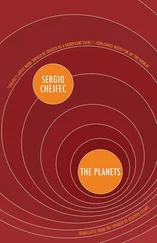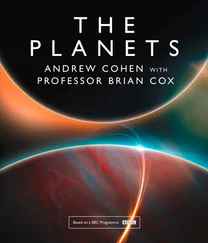Moments later, the shadow of the Moon passes and the natural world order is restored by the ordinary grace of the Sun’s familiar light. But visions of the eclipse persist among viewers, as though a miracle had been witnessed. Is it an accident that the Solar System’s lone inhabited planet possesses the only satellite precisely sized to create the spectacle of a total solar eclipse? Or is this startling manifestation of the Sun’s hidden splendour part of a divine design?
*Discarded comet dust litters interplanetary space, and when the Earth trundles into a patch of it, the particles that fall through the atmosphere are incinerated, appearing as isolated ‘shooting stars’ or whole showers of meteors.
*Degrees K, for Kelvin, are the same size as degrees Celsius (or centigrade) – almost double the value of Fahrenheit degrees. However the Kelvin scale starts lower, at −273 °C, or ‘absolute zero’, the point at which all motion ceases, and has no upper limit, which makes it useful for describing the temperatures of stars.
The planets speak an ancient dialect of myth. Their names recall all that happened before history, before science, when Prometheus hung shackled to that cliff in the Caucasus for stealing fire from the sky, and Europe was not yet a continent but still a girl, beloved by a god, who beguiled her disguised as a bull.
In those days Hermes – or Mercury, as the Romans renamed the Greek messenger god – flew fleet as thought on divine errands that earned him more mentions in the annals of mythology than any other Olympian: after the goddess of the harvest lost her only daughter to the god of the underworld, Mercury was sent to negotiate the victim’s rescue, and drove her home in a golden cart pulled by black horses. When Cupid got his wish, making Psyche immortal and therefore fit to marry him, it was Mercury who led the bride into the palace of the gods.
The planet Mercury appeared to the ancients, as it appears to the naked eye today, only on the horizon, where it coursed the twilight limbo between day and night. Swift Mercury either heralded the Sun at dawn, or chased after it through dusk. Other planets – Mars, Jupiter, Saturn – could be seen shining high in the sky all night for months on end. But Mercury always fled the darkness for the light, or vice versa, and hastened from view within an hour’s time. Likewise the god Mercury served as a go-between, traversing the realms of the living and the dead, conducting the souls of the deceased down to their final abode in Hades.
Myth may have conferred the god’s name on the planet, because it mirrored his attributes, or perhaps the observed behaviour of the planet gave rise to legends of the god. Either way, the union of planet Mercury with divine Mercury – and with Hermes, and the Babylonian deity Nabû the Wise before him – was sealed by the fifth century BC.
The persistent image of Mercury, lean and hell-bent as a marathon runner, personifies dispatch. Wings on his sandals urge him on, spurred faster by the wings on his cap, and the magic powers of his winged wand. Although speed tops the panoply of his powers, Mercury also gained fame as a giant-killer (after he slew thousand-eyed Argus) and as the god of music (because he invented the lyre, and his son, Pan, fashioned the shepherd’s pipe of reeds), god of commerce and protector of traders (for which he is remembered in words like ‘merchant’ and ‘mercantile’), of cheats and thieves (since he stole herds from his half-brother Apollo on the very first day of his life), of eloquence (having given Pandora the gift of language), as well as of cunning, knowledge, luck, roads, travellers, young men in general, and herdsmen in particular. His snake-entwined wand, the caduceus, has invoked fertility or healing or wisdom over the ages.
Mercury and his fellow travellers called attention to themselves by moving among the fixed stars, which earned them the name ‘planetai’ , meaning ‘wanderers’ in Greek. The orderliness of their motions brought ‘cosmos’ out of ‘chaos’ in the same language, and inspired an entire lexicon for describing planetary positions. Just as the gods’ names still cling to the planets, Greek terms such as ‘apogee’, ‘perigee’, ‘eccentricity’ and ‘ephemeris’ endure in astronomical discussions. The first observers to coin such words fill a roster of ancient heroes, from Thales of Miletus (624–546 BC), the founding Greek scientist who predicted a solar eclipse and questioned the substance of the universe, to Plato (427–347 BC), who envisioned the planets mounted on seven spheres of invisible crystal, nested one within the other, spinning inside the eighth sphere of the fixed stars, all centred on the solid Earth. *Aristotle (384–322 BC) later raised the number of celestial spheres to fifty-four, the better to account for the planets’ observed deviations from circular paths, and by the time Ptolemy codified astronomy in the second century AD, the major spheres had been augmented further by ingenious smaller circles, called ‘epicycles’ and ‘deferents’, required to offset the admitted complexities of planetary motion.
‘I know that I am mortal by nature, and ephemeral,’ says an epigraph opening Ptolemy’s great astronomical treatise, the Almagest , ‘but when I trace at my pleasure the windings to and fro of the heavenly bodies I no longer touch earth with my feet: I stand in the presence of Zeus himself and take my fill of ambrosia, food of the gods.’
In Ptolemy’s model, Mercury orbited the stationary Earth just beyond the sphere of the Moon. The impetus for motion came from a divine force exterior to the network of spheres. More than a millennium later, however, when Copernicus rearranged the planets in 1543, he argued that the mighty Sun, ‘as though seated on a royal throne’, actually ‘governs the family of planets’. Without specifying the force by which the Sun ruled, Copernicus ringed the planets round it in order of their speed, and set Mercury closest to the Sun’s hearth because it travelled the fastest.
Indeed, Mercury’s proximity to the Sun dominates every condition of the planet’s existence – not just its tantivy progress through space, which is all that can be easily gleaned from Earth, but also its internal conflict, its heat, heaviness, and the catastrophic history that left it so small (only one-third Earth’s width).
The pull of the nearby Sun rushes Mercury around its orbit at an average velocity of thirty miles per second. At that rate, almost double the Earth’s pace, Mercury takes only eighty-eight Earth-days to complete its orbital journey. The same Procrustean gravity that accelerates Mercury’s revolution, however, brakes the planet’s rotation about its own axis. Because the planet forges ahead so much faster than it spins, any given locale waits half a Mercurian year (about six Earth-weeks) after sunrise for the full light of high noon. Dusk finally descends at year’s end. And once the long night commences, another Mercurian year must pass before the Sun rises again. Thus the years hurry by, while the days drag on for ever.
Mercury most likely spun more rapidly on its axis when the Solar System was young. Then each of its days might have numbered as few as eight hours, and even a quick Mercurian year could have contained hundreds such. But tides raised by the Sun in the planet’s molten middle gradually damped Mercury’s rotation down to its present slow gait.
Day breaks over Mercury in a white heat. The planet has no mitigating atmosphere to bend early morning’s light into the rosy-fingered dawn of Homer’s song. The nearby Sun lurches into the black sky and looms enormous there, nearly triple the diameter of the familiar orb we see from Earth. Absent any aegis of air to spread out and hold in solar heat, some regions of Mercury get hot enough to melt metals in daylight, then chill to hundreds of degrees below freezing at night. Although the planet Venus actually grows hotter overall, because of its thick blanket of atmospheric gases, and Pluto stays altogether colder on account of its distance from the Sun, no greater extremes of temperature coexist anywhere in the Solar System.
Читать дальше












